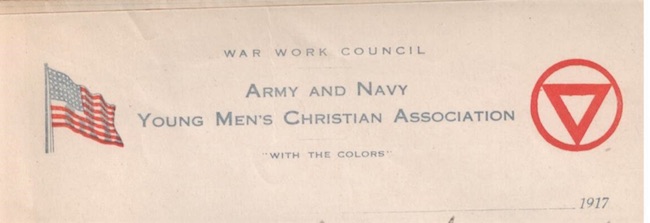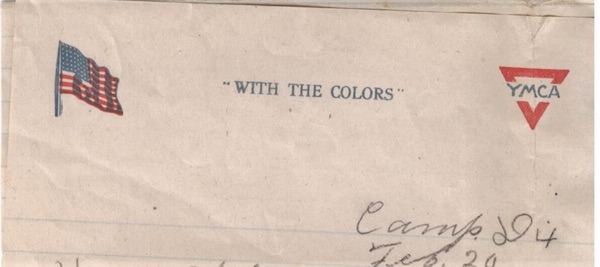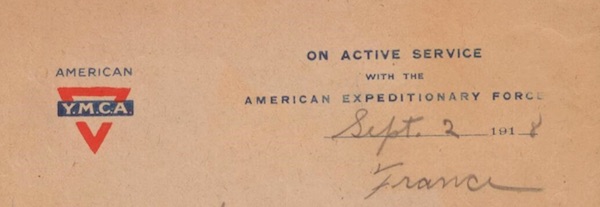Letters from WWI soldier came on letterheads from YMCA
Estimated 25,000 letters a week sent from soldiers with YMCA stationery

Letter from Fort Dix, NJ, 1917
By Catherine Cooper, Orleans County Historian
“Illuminating Orleans” – Vol. 1, No. 29
MEDINA – While reading the World War 1 letters of Dan Burns, (Ill. Orl. V.1, No. 28) it was intriguing to note the stationery he used. Almost all his letters were written on paper provided by the YMCA. The envelopes also carried the YMCA logo. The design of the letterhead confidently aligns the YMCA with the war cause.
Formed in London in 1844 to strengthen Christian principles by developing “mind, body and spirit,” the YMCA had rapidly grown into a worldwide welfare organization. The first version of the Y’s visual identity was a circle, with multi-layered words and images.
The simpler and more striking red triangle was proposed in 1891 by a Dr. Gulick. Some of the early versions include the words “Mind, Body, Spirit” engraved on the sides of the triangle. The triangle image was so powerful that YMCA personnel were sometimes referred to as “triangle people.”

Letters from Fort Dix, NJ, 1918.
The precedent of civilian aid to wartime soldiers was established during the Civil War when the YMCA provided physical and spiritual aid through a group named the United States Christian Coalition. They distributed food, clothing, medical supplies, and books. Volunteers wrote letters for the sick and wounded and provided postage for mailing correspondence.
This service was continued during the Spanish-American War, when they also began providing stationery. In fact, early letters from Roosevelt’s Rough Riders were written on YMCA stationery.
President Wilson quickly accepted the Y’s offer of service when war was declared in 1917. The logistics of mobilizing, training, and securing essential supplies and equipment for over one million soldiers in a short time were daunting.
This letterhead from France shows that the YMCA was actively associated with the war effort abroad. Indeed, the Y’s contributions during the war were considerable:
• 26,000 YMCA staff and 35,000 volunteers served in the US, Europe, Africa, Asia.
• 1,500 canteens provided hot drinks, personal supplies
• 4,000 “huts,” the only places of respite for soldiers on the front lines
• 26 leave centers in France offered wholesome activities
• 286 YMCA personnel were injured, 6 died while serving
The morale and welfare services provided to the military by the YMCA were vital to the success of the campaign. Writing in a fundraising pamphlet in 1918, General Pershing observed that:
“Nine men who are happy and entertained can outfight ten who are homesick and lonesome. It is the business of the “Y” to add this extra ten per cent to the fighting efficiency of our armies; to maintain that indefinable quality which wins wars – morale.”
Sometimes a hot drink, a smile, a quiet place to sit, some words of understanding, made all the difference between going on and giving up.
At that time, letters were the only form of contact between soldiers and their families. It is estimated that some 25,000 letters on YMCA stationery were written each day. One can imagine that the arrival of an envelope with the red triangle logo on an envelope was a welcome sight for worried families. No doubt, they too positively associated the “triangle people” with ministry and concern for the minds, bodies, and spirits of their loved ones.

Far better the red triangle of the YMCA than the Red Cross – or the dreaded telegram.



























































